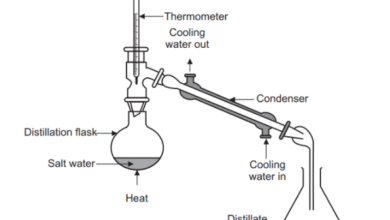How is artificial intelligence being used to enhance sustainability practices in businesses?

Introduction
Artificial intelligence (AI) is revolutionizing how businesses approach sustainability, providing innovative solutions that drive efficiency and environmental responsibility. By leveraging AI, companies can optimize resource use, reduce waste, and support eco-friendly initiatives. This article delves into the myriad ways AI is enhancing sustainability practices in businesses, showcasing its transformative potential.
AI in Energy Management
AI plays a crucial role in energy management, helping businesses monitor and optimize energy consumption. Through predictive analytics and real-time data analysis, AI systems can identify inefficiencies and recommend corrective actions, leading to significant energy savings and reduced carbon footprints.
Smart Grid Technology
AI-powered smart grids enable more efficient energy distribution, balancing supply and demand to minimize energy waste. These grids can adapt to changes in energy consumption patterns, integrate renewable energy sources, and enhance grid stability, making energy systems more sustainable.
Predictive Maintenance
Predictive maintenance uses AI algorithms to predict equipment failures before they occur, reducing downtime and prolonging the life of machinery. By optimizing maintenance schedules, businesses can avoid unnecessary repairs and replacements, contributing to sustainability by reducing waste and resource consumption.
Waste Management Optimization
AI enhances waste management by improving sorting and recycling processes. Machine learning algorithms can identify different types of waste materials, enabling more efficient recycling and reducing the amount of waste sent to landfills.
Supply Chain Optimization
AI improves supply chain sustainability by optimizing logistics, reducing emissions, and minimizing resource use. Through data analysis and predictive modeling, AI can streamline supply chains, reduce transportation costs, and ensure sustainable sourcing of materials.
Sustainable Product Design
AI supports sustainable product design by analyzing materials and processes to minimize environmental impact. By simulating different design scenarios, AI helps businesses create eco-friendly products that require fewer resources and generate less waste.
Carbon Footprint Reduction
AI helps businesses track and reduce their carbon footprint by analyzing data on energy use, emissions, and resource consumption. By identifying key areas for improvement, AI enables companies to implement strategies that lower their carbon emissions and enhance sustainability.
Renewable Energy Integration
AI facilitates the integration of renewable energy sources like solar and wind into business operations. Through predictive analytics and real-time monitoring, AI systems can optimize the use of renewable energy, ensuring a steady supply while reducing reliance on fossil fuels.
Water Management
AI technologies help businesses manage water resources more efficiently by monitoring usage, detecting leaks, and predicting demand. This leads to significant water savings and supports sustainable water management practices.
Sustainable Agriculture
AI transforms agriculture by enabling precision farming techniques that reduce resource use and increase crop yields. Through data analysis and machine learning, AI helps farmers optimize irrigation, fertilization, and pest control, promoting sustainable agricultural practices.
AI in Environmental Monitoring
AI enhances environmental monitoring by analyzing data from sensors and satellites to track changes in ecosystems. This allows businesses to monitor their environmental impact and implement measures to mitigate negative effects.
Climate Change Mitigation
AI aids in climate change mitigation by modeling climate scenarios and predicting the impact of different interventions. This enables businesses to develop strategies that reduce their carbon footprint and support global efforts to combat climate change.
Circular Economy Models
AI supports the development of circular economy models by optimizing the use of resources and promoting recycling and reuse. Through data analysis, AI helps businesses identify opportunities to minimize waste and create closed-loop systems.
AI in Green Building Design
AI contributes to green building design by optimizing energy use, improving indoor air quality, and reducing environmental impact. By simulating different design options, AI helps architects and engineers create sustainable buildings that are energy-efficient and environmentally friendly.
Transportation Efficiency
AI enhances transportation efficiency by optimizing routes, reducing fuel consumption, and promoting the use of eco-friendly vehicles. This leads to lower emissions and supports sustainable transportation practices.
Sustainable Business Models
AI enables the development of sustainable business models by analyzing market trends and consumer behavior. This helps businesses identify opportunities for sustainable growth and align their operations with environmental goals.
AI and Corporate Social Responsibility
AI supports corporate social responsibility (CSR) initiatives by providing insights into environmental and social impact. By analyzing data on sustainability performance, AI helps businesses improve their CSR strategies and report on their progress.
Energy-Efficient Data Centers
AI optimizes the operation of data centers, reducing energy consumption and cooling requirements. This leads to more sustainable data management practices and supports the growth of eco-friendly digital infrastructure.
Resource Optimization
AI helps businesses optimize the use of resources such as raw materials, energy, and water. By analyzing data on resource consumption, AI systems can recommend ways to reduce waste and improve efficiency.
AI in Sustainable Finance
AI supports sustainable finance by analyzing environmental, social, and governance (ESG) data to inform investment decisions. This promotes the allocation of capital to businesses that prioritize sustainability and social responsibility.
Enhancing Transparency
AI enhances transparency in sustainability practices by providing real-time data on environmental performance. This enables businesses to communicate their sustainability efforts more effectively and build trust with stakeholders.
AI in Retail Sustainability
AI helps retailers improve sustainability by optimizing inventory management, reducing waste, and promoting eco-friendly products. Through data analysis, AI systems can identify trends and recommend sustainable practices that align with consumer preferences.
Biodiversity Conservation
AI supports biodiversity conservation by analyzing data on species and ecosystems. This helps businesses understand their impact on biodiversity and implement measures to protect natural habitats.
Sustainable Packaging
AI aids in the development of sustainable packaging solutions by analyzing materials and design options. This helps businesses reduce packaging waste and promote the use of eco-friendly materials.
AI in Renewable Energy Forecasting
AI improves the forecasting of renewable energy production, enabling better integration of renewable sources into the energy grid. This supports the transition to a more sustainable energy system.
Environmental Compliance
AI helps businesses ensure compliance with environmental regulations by monitoring and analyzing data on emissions and resource use. This reduces the risk of non-compliance and supports sustainable business practices.
Smart Cities
AI contributes to the development of smart cities by optimizing urban infrastructure and resource use. Through data analysis, AI systems can improve transportation, energy management, and waste management, promoting sustainability in urban areas.
Employee Engagement in Sustainability
AI engages employees in sustainability initiatives by providing tools and insights that promote eco-friendly practices. This fosters a culture of sustainability within the organization and encourages employees to contribute to environmental goals.
Future Trends in AI and Sustainability
The future of AI in sustainability is promising, with advancements in technology expected to drive further innovation. Emerging trends include the use of AI for climate modeling, carbon capture, and the development of new sustainable materials.
Conclusion
Artificial intelligence is a powerful tool for enhancing sustainability practices in businesses. By leveraging AI technologies, companies can optimize resource use, reduce waste, and promote environmental responsibility. As AI continues to evolve, its potential to drive sustainable innovation and support global sustainability goals will only grow.
FAQs
How does AI help in energy management?
AI helps in energy management by monitoring and optimizing energy consumption, identifying inefficiencies, and recommending actions to save energy and reduce carbon footprints.
What role does AI play in waste management?
AI enhances waste management by improving sorting and recycling processes, leading to more efficient recycling and reduced landfill waste.
How does AI support sustainable agriculture?
AI enables precision farming techniques, optimizing irrigation, fertilization, and pest control, which reduce resource use and increase crop yields.
What is the impact of AI on supply chain sustainability?
AI optimizes supply chain logistics, reduces emissions, and ensures sustainable sourcing, making supply chains more efficient and eco-friendly.
How can AI help businesses reduce their carbon footprint?
AI analyzes data on energy use and emissions, identifying areas for improvement and enabling businesses to implement strategies to lower their carbon emissions.
What are the future trends in AI and sustainability?
Future trends include AI for climate modeling, carbon capture, and the development of new sustainable materials, driving further innovation in sustainability practices.



